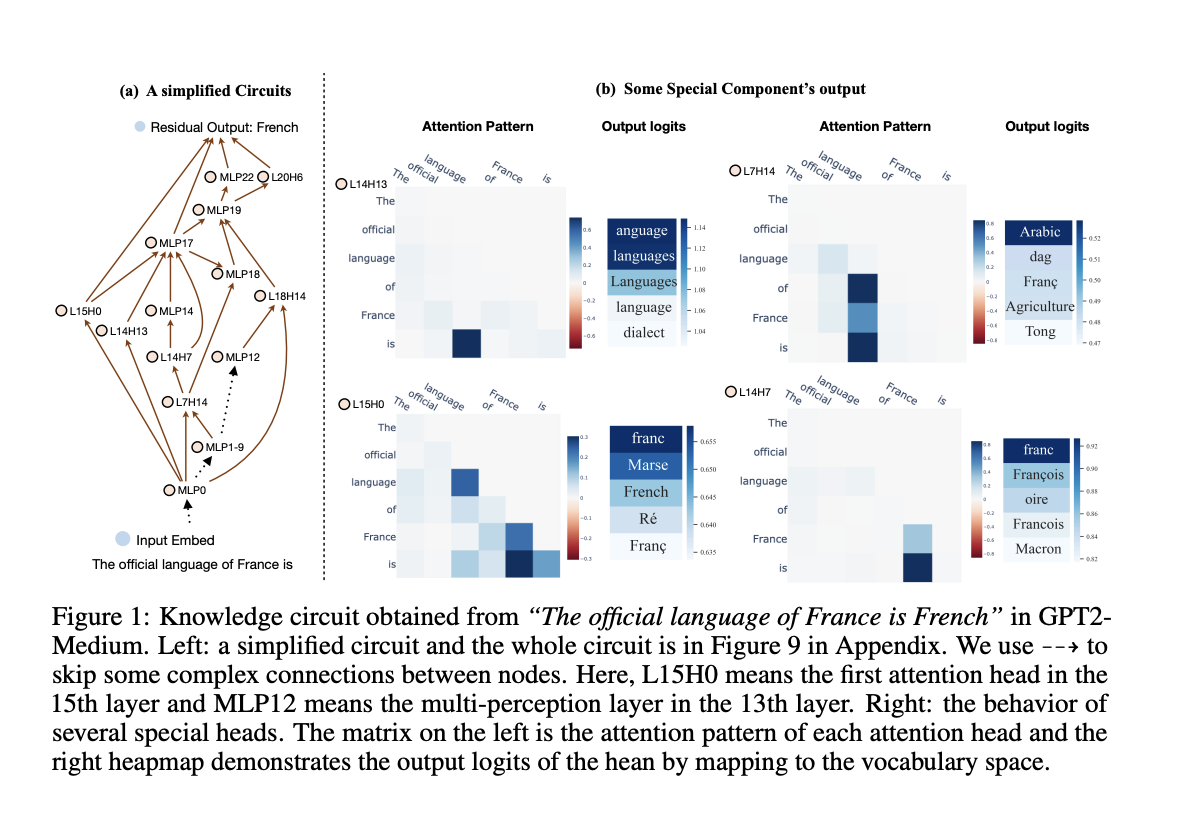
Understanding Large Language Models (LLMs)
Large language models (LLMs) can comprehend and create text that resembles human writing. They achieve this by storing extensive knowledge within their systems. This ability allows them to tackle complex reasoning tasks and communicate effectively with people. However, researchers are still working to improve how these models manage and utilize knowledge to make them more efficient and reliable.
Challenges with LLMs
A major issue with LLMs is that they can produce incorrect, biased, or misleading information. These problems stem from a lack of understanding of how models organize and retrieve knowledge. Without insights into the interactions among various model components, it’s tough to fix errors or enhance performance. Most research has focused on individual elements instead of the larger relationships between them, which limits improvements in accuracy and safe knowledge retrieval.
Current Analysis Techniques
Traditional methods for analyzing language models usually look at specific neurons that store factual information. Techniques have been developed to edit this stored data to correct inaccuracies and reduce biases. Unfortunately, these methods often fail to generalize, can disrupt related knowledge, and don’t fully utilize the edited information. They also neglect how different model components work together, which hampers their effectiveness in addressing knowledge issues.
Introducing Knowledge Circuits
Researchers from Zhejiang University and the National University of Singapore have proposed a new approach called “knowledge circuits.” These circuits consist of interconnected parts within a model’s structure, including various components like MLPs and attention heads. By using models like GPT-2 and TinyLLAMA, they demonstrated how these circuits effectively store, retrieve, and apply knowledge by emphasizing the collaboration of components.
Building Knowledge Circuits
To create knowledge circuits, researchers analyzed the model’s structure and studied how changes affected performance. They identified key connections and the roles of different components. This research revealed how some components are responsible for transferring information and understanding contextual relationships. Knowledge circuits were shown to gather information in earlier layers and refine it in later layers to improve predictive accuracy.
Improvements in Performance
The research showed that knowledge circuits could maintain over 70% of a model’s performance while using only 10% of its parameters. For instance, the accuracy for landmark-country relations improved from 16% to 36%. This indicates that focusing on essential circuits can enhance accuracy. Additionally, knowledge circuits help models understand complex issues like hallucinations and adapt during learning.
Limitations of Existing Methods
The study also highlighted the limitations of current knowledge-editing techniques. While some methods successfully added new knowledge, they often disrupted unrelated areas. This issue emphasizes the need for more precise editing techniques that consider the broader context of knowledge circuits rather than focusing solely on individual components.
Conclusion
This research offers a new perspective on how large language models operate by focusing on knowledge circuits. By shifting the emphasis from isolated parts to interconnected structures, it provides a comprehensive framework for improving these models. The insights gained can lead to better knowledge management, safer editing practices, and improved model understanding. Future research could explore the scalability of knowledge circuits across different domains, enhancing the effectiveness of LLMs.
Stay Connected
For further insights, check out the Paper and GitHub Page. Follow us on Twitter, join our Telegram Channel, and connect with our LinkedIn Group. Also, join our 60k+ ML SubReddit.
Transform Your Business with AI
If you want to enhance your company using AI, consider the following steps:
- Identify Automation Opportunities: Find key customer interaction points that can benefit from AI.
- Define KPIs: Ensure your AI projects have measurable impacts on business outcomes.
- Select an AI Solution: Choose tools that suit your needs and allow customization.
- Implement Gradually: Start with a pilot program, collect data, and expand usage wisely.
For AI KPI management advice, contact us at hello@itinai.com. For ongoing insights into leveraging AI, follow us on Telegram or Twitter.
Enhance Sales and Customer Engagement with AI
Discover how AI can transform your sales processes and customer interactions at itinai.com.



























